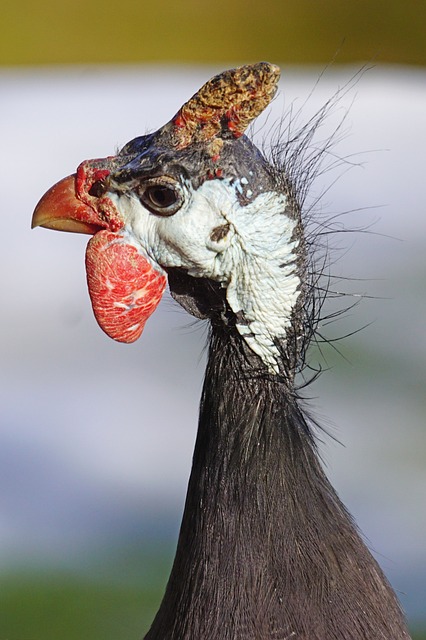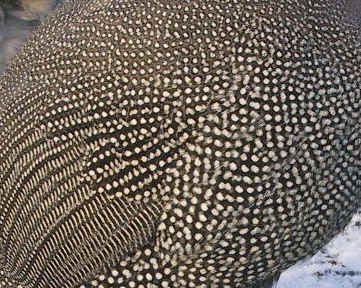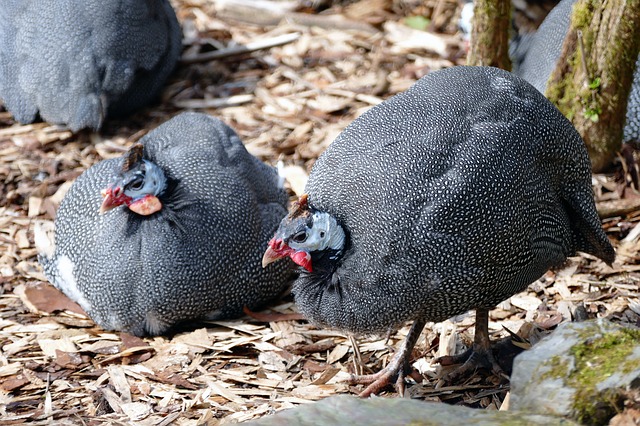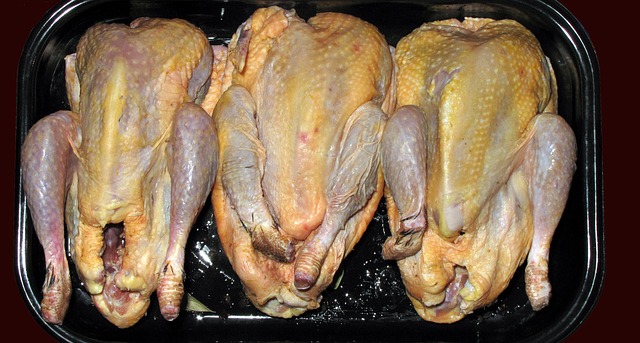
Guinea fowl (also called pond epics) are not as easy to keep as chickens. The most common guinea fowl in our country is the Helmet Guineafowl (Numida Meleagris Domesticus). The guinea fowl is originally from Africa, but the species in question is now well accustomed to our climate.
Hatching and rearing is just like with chickens, only the breeding time is 24 days instead of 21 days with chickens, although the small chicks are much more vulnerable than those of chickens. The eggs are small, have a point and are gray brown. Guinea fowl do not lay all year round like chickens, so you do not have to keep them for the eggs. In the incubator the eggs require a temperature of 98.2 ° F (36.8 ° C) to 98.5 ° F (37.00 C).
The gender determination of guinea fowl is difficult. This is impossible in chicks and even in adult animals it is difficult. With the adult cock, the wattles are more pronounced at the head than at the females, but it remains very difficult to see.
Guinea fowl make a huge noise when they detect scares or fires. Not suitable for when your neighbors are close! They can fly very well, so you have to take that into account. If you keep a group of guinea fowl loose (not in a run), they will often walk around and explore the entire environment (so really everywhere they can come!).
The plumage is very smooth against the body and are also relatively strong animals, you really need both hands to hold one! With the beak they can chop considerably if necessary. A guinea fowl is usually in charge of all chickens (also about the roosters) in a chicken coop. They have a lot of respect for it.

The beautiful drawing of a guinea fowl.

Plucked a guinea fowl does not differ much from a chicken. The sheet is only slightly browner.
In the past the slaughter of guinea fowl was tied to the autumn season. Nowadays, guinea fowl are available all year round.
The eggs are small, have a point and are gray brown. Guinea fowl do not lay like chickens all year round.
Guinea fowl is preferably eaten young. The tastiest are fowl from 6 to 10 months old. Their meat is tender and juicy.
Preparation
Guinea fowl is prepared as a young pheasant, partridge or even as chicken. The meat can be roasted or sautéed. The meat of an older guinea fowl is a bit sturdier and is mainly processed as ragout or prepared as a poulard. In order to keep the meat juicy while it is being prepared, it is advisable to baste it regularly and with regular liquid. Flambé with cognac increases the taste even more.

 Back to keeping animals
Back to keeping animals